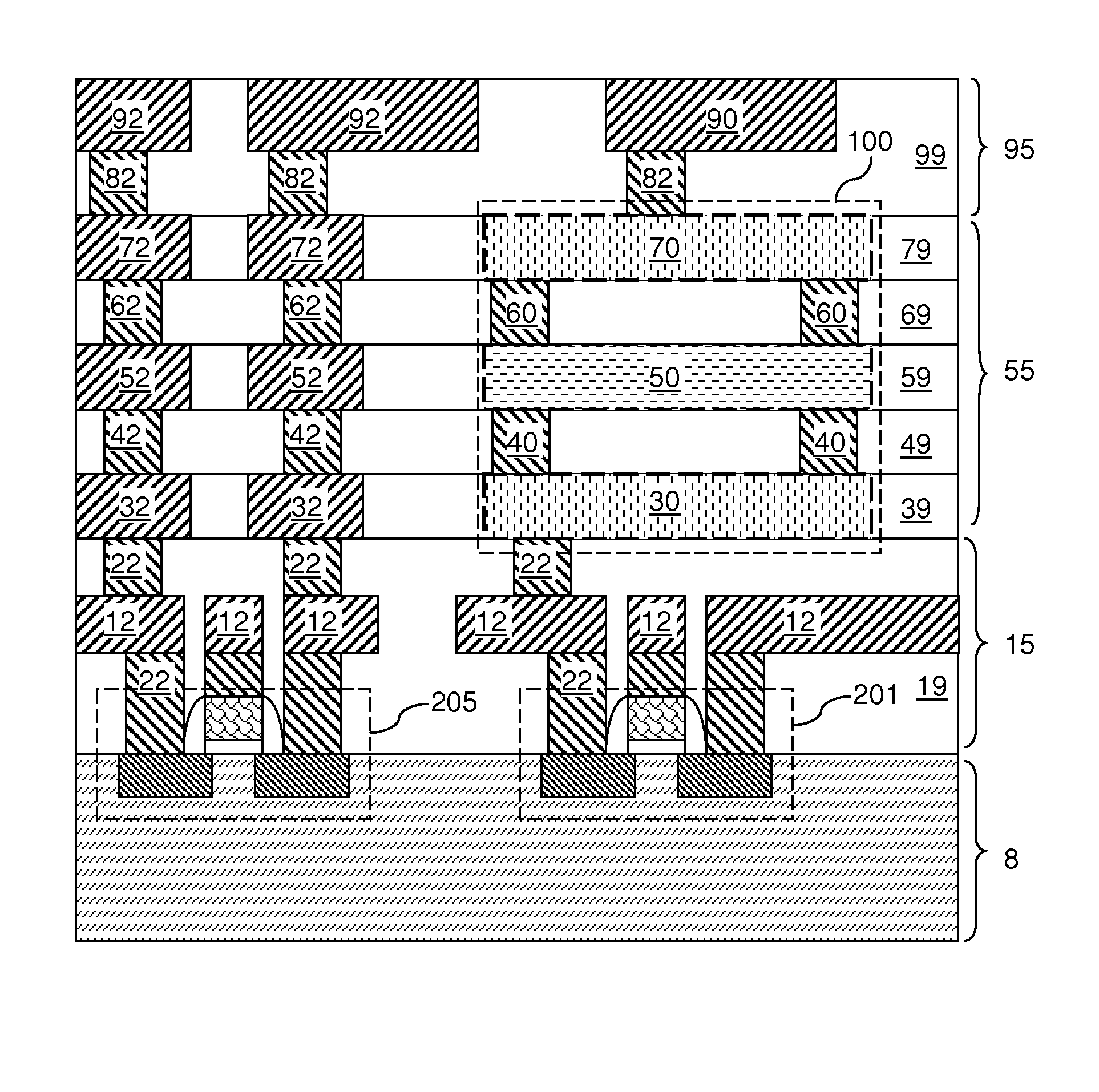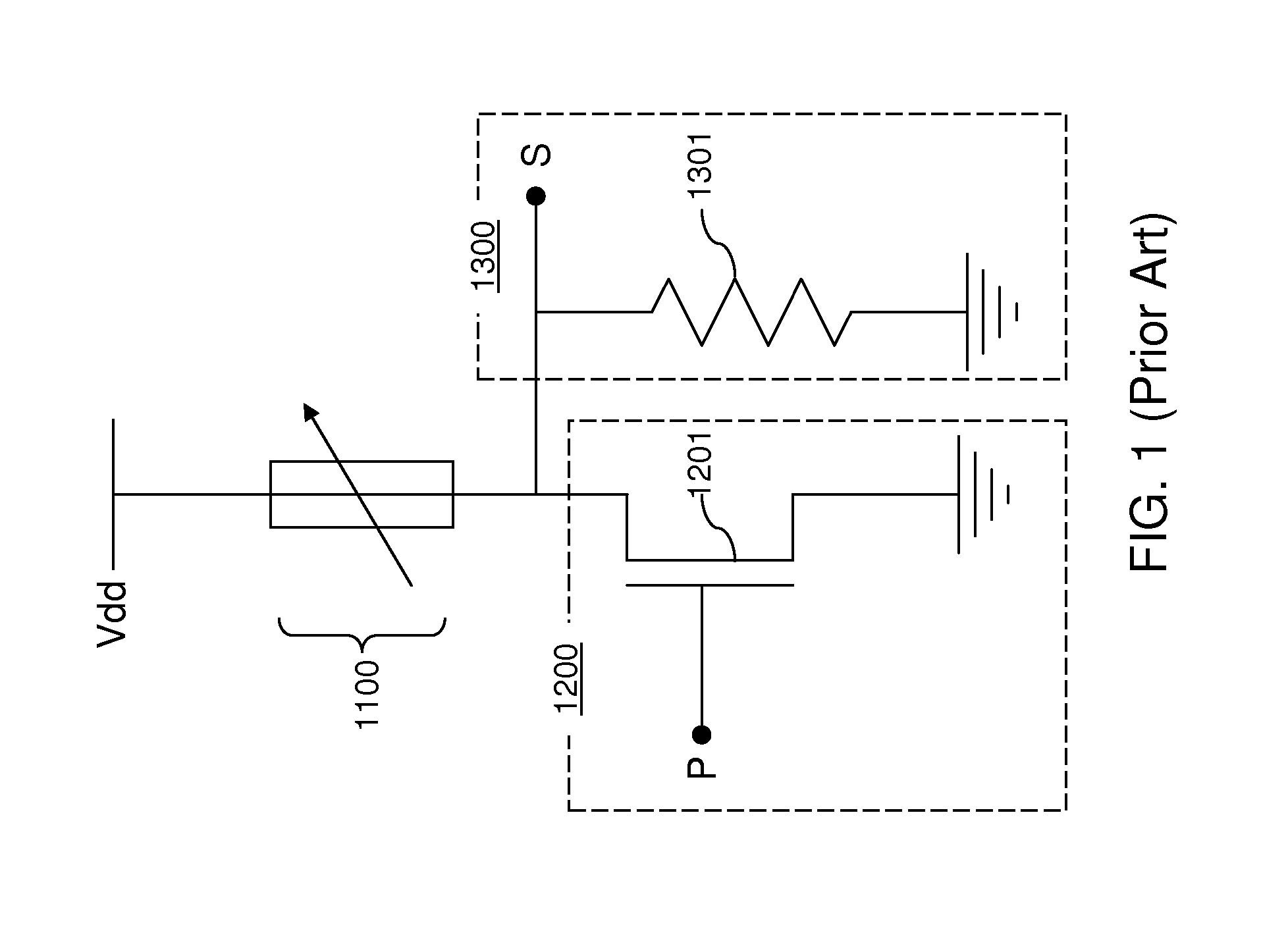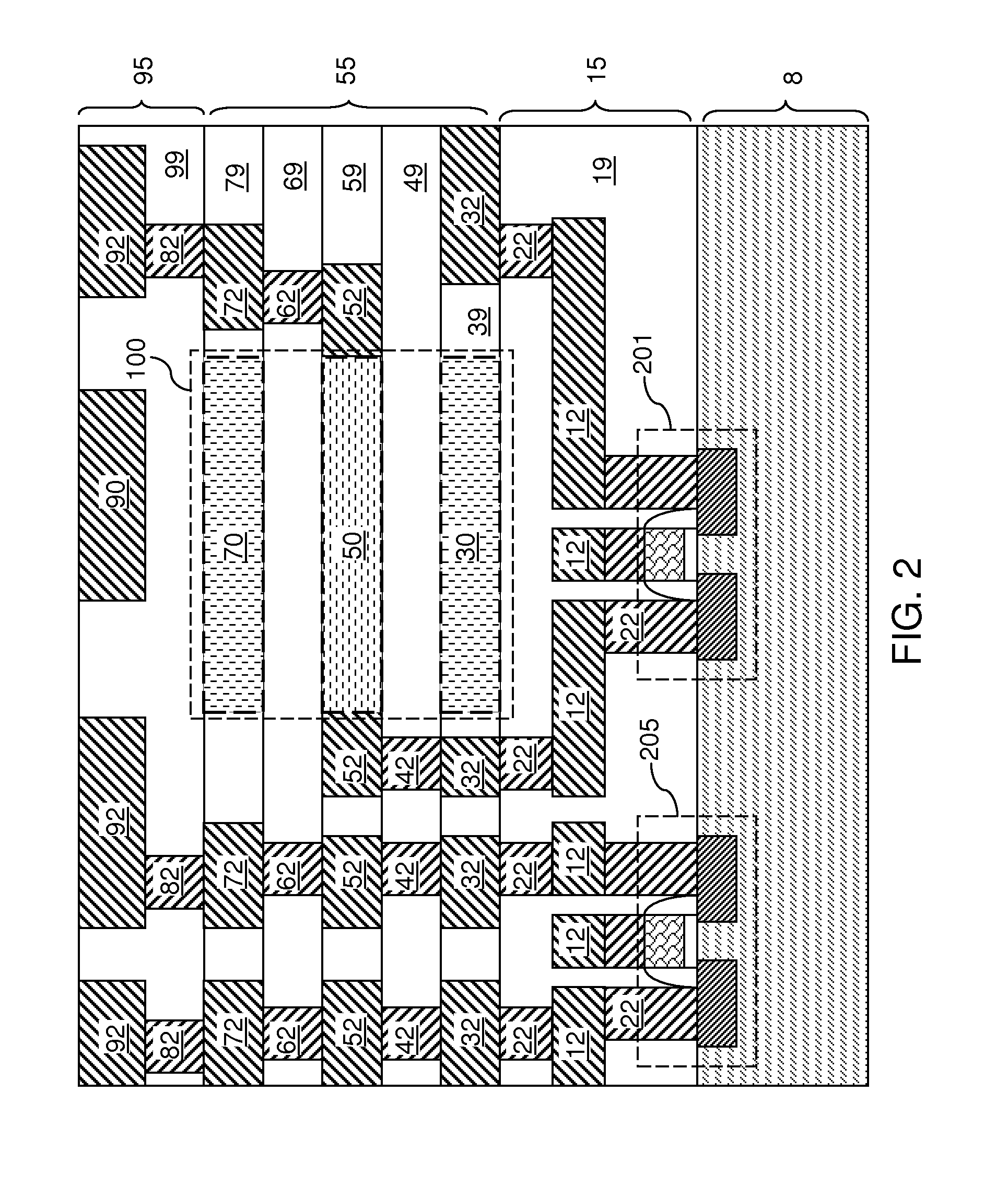Electrically programmable metal fuse
a metal fuses and electrical programming technology, applied in the field of metal electrical fuses, can solve the problems of excessive collateral structural damage to surrounding structures, difficult control of electromigration in metal lines, etc., and achieve the effects of preventing thermal cracking, reducing required power, and preventing metal from diffusing
- Summary
- Abstract
- Description
- Claims
- Application Information
AI Technical Summary
Benefits of technology
Problems solved by technology
Method used
Image
Examples
first embodiment
[0018]Referring to FIG. 2 and FIGS. 3A-3C, a first exemplary eFuse structure according to the present disclosure includes a stack, from bottom to top, of a semiconductor substrate 8, underlying interconnect structure layers 15, electrically programmable fuse-including (“e-Fuse-including”) interconnect structure layers 55, and overlying interconnect structure layers 95. The semiconductor substrate 8 includes a semiconductor material layer, and may be a bulk semiconductor substrate or a semiconductor-on-insulator (SOI) substrate. A programming transistor 201 for programming an electrically programmable fuse 100 can be provided on the semiconductor substrate 8. Further, additional semiconductor devices 205 such as field effect transistors, junction transistors, diodes, capacitors, inductors, resistors, and / or optical communication devices as known in the art can also be formed on the semiconductor substrate 8.
[0019]The underlying interconnect level layer 15 includes at least one underl...
second embodiment
[0058]Referring to FIGS. 7A-7E, a variation of the second exemplary eFuse structure according to the present disclosure can substitute each or any of the first upper via level metal structure 60A, the second upper via level metal structure 60B, the first lower via level metal structure 40A, and the second lower via level metal structure 40B with a via level metal structure of unitary construction (i.e., in a single piece) having a constant width along a lengthwise direction, and extending along a lengthwise direction of the first metal line portion 54 or a lengthwise direction of the second metal line portion 56. Thus, one or more of the first upper via level metal structure 60A, the second upper via level metal structure 60B, the first lower via level metal structure 40A, and the second lower via level metal structure 40B is a via level structure having a shape of a metal line.
[0059]The via level metal structures (60A, 60B, 40A, 40B) of unitary construction help confine the heat ge...
PUM
| Property | Measurement | Unit |
|---|---|---|
| resistance | aaaaa | aaaaa |
| aspect ratio | aaaaa | aaaaa |
| aspect ratio | aaaaa | aaaaa |
Abstract
Description
Claims
Application Information
 Login to View More
Login to View More - R&D
- Intellectual Property
- Life Sciences
- Materials
- Tech Scout
- Unparalleled Data Quality
- Higher Quality Content
- 60% Fewer Hallucinations
Browse by: Latest US Patents, China's latest patents, Technical Efficacy Thesaurus, Application Domain, Technology Topic, Popular Technical Reports.
© 2025 PatSnap. All rights reserved.Legal|Privacy policy|Modern Slavery Act Transparency Statement|Sitemap|About US| Contact US: help@patsnap.com



